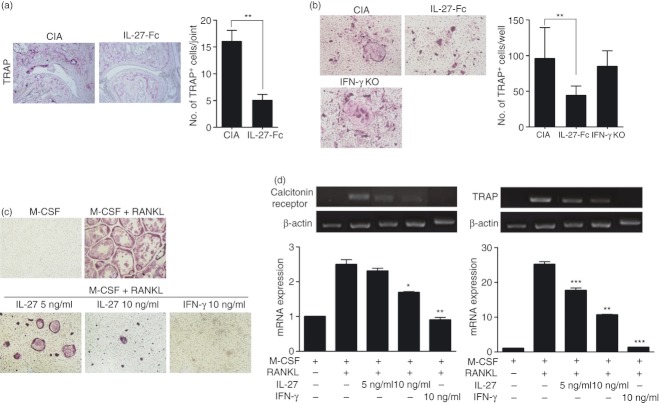Figure 2.
The effect of interleukin-27 (IL-27) on osteoclast differentiation. (a) Tartrate-resistant acid phosphatase (TRAP) staining of ankle joints. The number of TRAP+ cells was compared between collagen-induced arthritis (CIA) and IL-27-Fc-treated mice in Fig. 1. (b) Bone marrow cells from CIA and IL-27-Fc-treated mice in Fig. 1 were induced to undergo osteoclast differentiation by culturing them in the presence of macrophage colony-stimulating factor (M-CSF) and receptor activator of nuclear factor-κB ligand (RANKL). The number of multinucleated TRAP+ cells was measured by light microscopy. Data represent the average value calculated from four independent experiments. **P < 0·01, compared with the M-CSF plus RANKL culture conditions. (c) Mouse bone marrow cells from DBA/1J were cultured with or without IL-27 in osteoclast differentiation conditions for 4 days. Cells were then fixed and stained for TRAP. The number of multinucleated TRAP+ cells was measured by light microscopy. Data represent the average value calculated from four independent experiments. **P < 0·01, compared with the M-CSF plus RANKL culture conditions. (d) RNA was extracted and the expression levels of osteoclast-related genes, calcitonin receptor, and TRAP were quantified by reverse transcription-PCR. Messenger RNA levels were normalized to β-actin. Data represent the average value calculated from three independent experiments. *P < 0·05; **P < 0·01; ***P < 0·001, compared with the M-CSF plus RANKL culture conditions.

